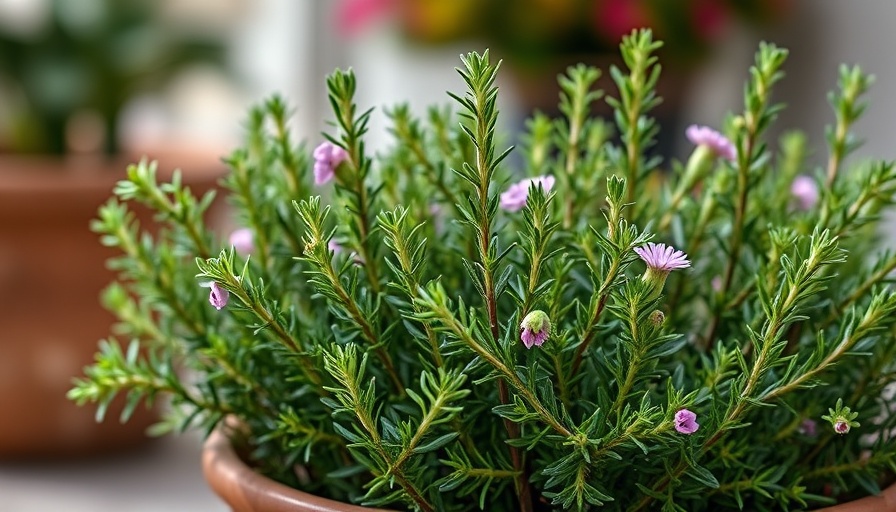
Why Cultivating Rosemary in Containers is Brilliant
Imagine stepping outside your door to the aromatic scent of rosemary wafting through the air, ready to add its delightful touch to your favorite dishes. Growing rosemary in containers not only allows for this sensory experience but also grants versatility in your gardening approach. For those living in climates where winter wreaks havoc on outdoor plants, this perennial gem offers a solution: simply move it indoors when the temperatures drop. This way, your rosemary thrives year-round, becoming a staple in both culinary creations and home decorations.
The Perfect Container: Choosing Wisely
Choosing the right container is just as crucial as selecting the herb itself. A pot with a minimum depth and width of six to eight inches is ideal. Consider materials that suit your aesthetic preferences—be it ceramic, terracotta, or even recycled plastic—just ensure that the container boasts proper drainage. Nobody wants their rosemary’s roots drowning in excess water, which can quickly lead to root rot and decline. Additionally, pairing your rosemary with other herbs, like lavender, not only benefits from similar watering needs but also creates a visually appealing garden space.
Ideal Cultivars: Selecting the Right Varieties
When picking rosemary cultivars, consider your gardening goals. Some favorites include 'Tuscan Blue' for its vigorous growth and aromatic qualities, or 'Prostratus' if you fancy a trailing option that’s perfect for hanging pots. Each variant brings its unique flair, making it easier to select a type that complements your gardening style. These cultivars not only provide culinary delights but can also serve ornamental purposes, enhancing the overall appearance of your greenery.
Pests and Diseases You Might Encounter
Like any gardening venture, growing rosemary in containers is not without its challenges. Common pests such as aphids or spider mites may surprise you, but fear not! Natural remedies like insecticidal soap can help, and encouraging beneficial insects will keep these pesky critters at bay. Additionally, be mindful of potential diseases like powdery mildew; ensuring proper air circulation and avoiding overcrowding can mitigate these risks.
Transforming Your Space: The Best Uses for Rosemary
So, you've grown your rosemary successfully—what now? This herb isn't just a culinary delight; it can also enhance your living space. From crafting homemade bath products using rosemary for its soothing aroma to incorporating it in bouquets, this herb has a myriad of uses. Its oil can even repel pests, making it a double-duty plant in your garden. Moreover, a touch of rosemary can elevate any meal, from roasted vegetables to seasoned meats, enriching the flavors of your favorite dishes.
Empower Your Journey: Gardening as Self-Sufficiency
Growing rosemary in containers is more than just an aesthetic or culinary choice; it symbolizes empowerment through self-sufficiency. At the heart of this green-thumb endeavor, many find a connection not only with nature but also within their own community as they share the fruits of their labor with friends and family. By successfully nurturing your own herbs, you contribute to sustainability and embrace the creative aspects of gardening.
Take Action Today and Grow Your Own!
With so many benefits of cultivating rosemary in containers, it’s time to take action. Start with a simple seed or sapling, choose a suitable container, and educate yourself on proper care techniques. By integrating this aromatic herb into your gardening repertoire, you’re not only enhancing your cooking but also nurturing a sustainable lifestyle. Join the wave of urban gardeners taking on exciting DIY gardening projects, and let your rosemary thrive!
 Add Row
Add Row  Add
Add 




 Add Row
Add Row  Add
Add 

Write A Comment